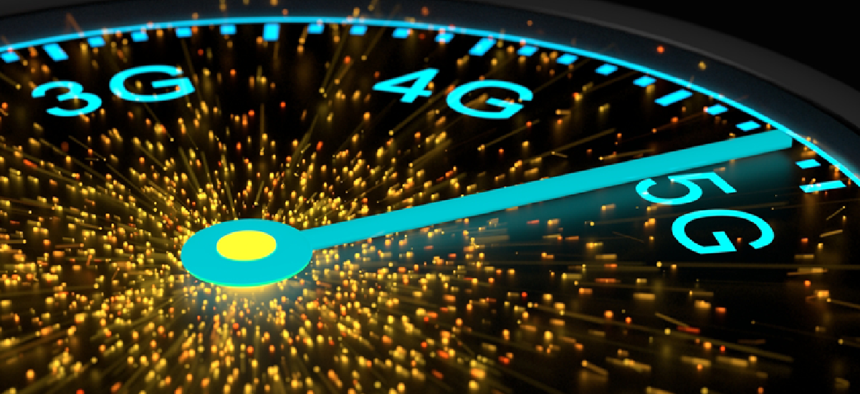Can 5G strengthen space-ground communications?

The Air Force is looking to leverage next-gen mobile technologies to connect terrestrial and space-based systems.
The Air Force is looking for ideas on how to leverage 5G technologies to transmit space data to and from space and across terrestrial and space-based systems.
According to a Feb. 18 sources sought notice, the Air Force’s Cross Mission Ground and Communications Enterprise Directorate’s main focus is on adapting 5G radio access network for space-ground communications in contested environments. It also seeks to leverage 5G network slicing and orchestration as well as artificial intelligence capabilities to manage legacy and emerging space data transport networks, including ground data transport infrastructure and networks from commercial augmentation services, partners and potential commercial 5G providers.
Because the 10 areas cover a wide range of technologies, the Air Force said may adjust future space data transport programs based on the feedback it receives.
The Air Force is generally interested in any application of 5G applied to space systems, but specifically wants answers to the questions about related to the following 10 technologies:
Multiple-input and multiple output. Could 5G-enabled or massive MIMO enhance communication links between earth and U.S. spacecraft? Could 5G MIMO radio-access networks (RAN) improve potential data transport between earth and space where there are already thousands of satellites in orbit and possible electronic warfare emitters on land in the air and in space?
Millimeter wave antennas. Could compact, low-cost, high-gain array antennas and data links in the 5G millimeter wave bands provide data networking in space?
RAN slicing. How could 5G RAN slicing technology connect a space operations center through terrestrial networks to a space network and then to a given spacecraft?
Network slice orchestration. How could the government use 5G cloud-based NSO to securely manage potentially thousands of RAN slices?
Artificial intelligence/machine learning. Which 5G AI/ML tools and techniques could provide message stream recognition and content analysis and help with network slice orchestration? Could future space networks become self-monitoring autonomic networks with automatic end-to-end adaptation?
Trustworthy autonomous networks. What are the risks of deploying increasingly autonomous systems? What technologies and techniques can help assure trust in future autonomous networks?
Cybersecurity. What 5G and emerging 6G cybersecurity features can protect control systems from unauthorized access and manipulation?
Internet of space things. What would be the military and commercial benefits to IoST technology readiness, and what types of experiments would enable its development?
Multitenant edge computing. What are the best opportunities for MEC in space and in ground support networks?
5G space-to-ground networks. What are the ground-based infrastructure needs and costs both for supporting constellations and for realizing services in remote areas? Can commercial 5G towers be expected to connect to a spacecraft if signals conform to a specifications, thus opening a Wi-Fi type of 5G for space?






